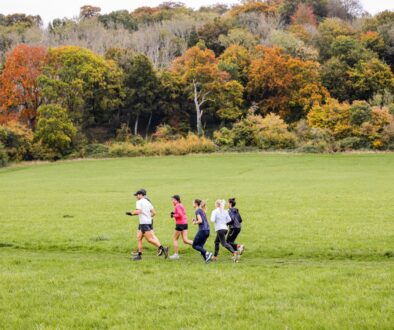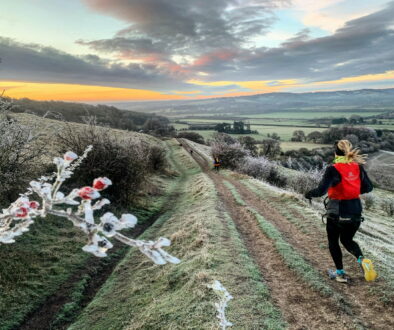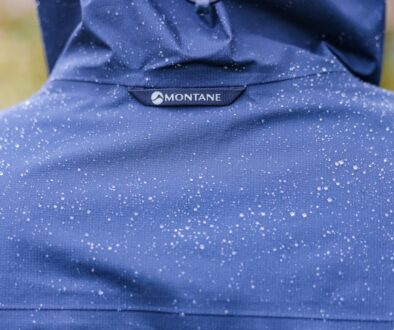Staying safe on the trails is a primary concern for many runners, particularly during the winter. In this article we look at things you can do to feel safer when running and enjoy getting out on the trails more often.
Trail running is such a great way to explore the outdoors. It is in many ways the ultimate form of running as it boosts not only physical health, but also mental health in more ways than road running can. However, you might be a bit cautious about heading out into the woods on your own and so we wanted to put together a list of things you can do reduce your concerns towards trail safety.
What are your fears?
Depending on how much trail running you’ve already done, from none to being a mountain goat, will impact the way you perceive hazards and risk on the trails <read our article on Managing Risk in the Outdoors> . We’ve identified the most common justifiable concerns, and given you our top tips for mitigating them.
-
Being harrassed
We’ve started with this, as for many, particularly female runners this is their primary concern and often tip toed around by other articles. In 2024 Manchester University surveyed female runners in the Greater Manchester and Merseyside area and found that almost 70% of the 498 female runners surveyed had experienced some sort of abusive behaviour whilst out running. You can read the summary here. Runners World also hosted a survey in 2021 which sampled 2000 female runners, revealing 60% experienced harassment. We don’t know how much of this sample was trail running vs road running, but the implication of the survey is that it’s urban areas.
The perceived risk that running on a trail on your own, you will come across an axe wielding madman, is far greater than the reality! (thank goodness) However, the chance of being intimidated running along the pavement in a town is much higher, but your perception of this risk is skewed by horror movies, the extreme consequence of the small chance, akin to the perception of risk of flying vs. driving a car. Similarly, the expectation that the public around will help you in a town, is sadly not always the case. However, it’s important to recognise that your fear is founded, both on survey data and probably, sadly, also by personal experience.
What can be done on a personal level to improve safety?
You should be able to run safely anywhere. Until that day, let’s put together some practical suggestions that will help reduce risk and improve and restore confidence on the trails.
- Run with others, maybe a Run the Wild event, a club run, a friend, Park Run. There is clear evidence that running with others improves safety.
- Carry a mobile phone, share your location, and tell someone where you are going and what time you will be back
- Run during the light
- Run with a dog – canicrossing is great for you and your dog, and it will make people think twice
- Carry an attack alarm
- Take part in some self-defence classes
- Finally, and this one is really important, particularly for the non-female runners. Don’t turn a blind eye if you see a female runner being harassed, call the police and actively help provide support where you are able. 80% of all violent crime in the UK is committed by males, so males are the problem not the females. The responsibility is on male runners to do whatever they can in their running communities to support female runners and that may mean giving more space to other female runners whilst out running. Abuse of anyone in our society is unacceptable.
-
Darkness
A good headtorch of at least 200 lumens and battery life of 2 hours should solve this issue (see our article on choosing a headtorch). Run the trail during the daylight first so it’s more familiar to you and take it more steady at night. Also wear high visibility clothing to ensure other users can see you.
-
Getting lost
Download the route onto your phone and watch. The COROS app has a great mapping tool and we also recommend using Outdooractive. Stick with local trails until you increase your confidence and always have a plan B so you can cut your route short. Also, why not sign yourself up for a navigation course?
-
Bad weather
There’s no such thing as bad weather, just poor clothing choices! Check the weather forecast and adjust your plan accordingly. Wear trail shoes appropriate to the trails, ones with more aggressive tread if it’s muddy. Invest in a good waterproof jacket (see guide), have some spare warm layers and a snack. Know where to cut your route short in case it’s all getting too much!
-
Falling over
I’ve fallen over on roads and pavements far more times than on a trail but roots and other trail furniture certainly adds to the trip hazards, not to mention head height branches. Good trail shoes and running trails more often will improve confidence. Always look ahead and stay focussed. Finally, carry a small first aid kit with you and if you are really interested do a first aid course. However, most fears of falling over on trails are unfounded and most likely due to wearing road shoes!
-
Livestock
Jumpy young cows, particularly in the springtime are unnerving. If you can’t avoid them, walk calmly on the edge of the field so you have an escape route. Most young cows are just inquisitive and get more excited when you start running, so stay calm and talking to them helps too.
-
Remoteness
Even the most experienced trail runners take this into consideration. It increases the time for getting any external help, snowballs any other hazards in play and us trail runners generally take only a small amount of gear with us, so we have a thinner margin for error. The more remote an area, the better your planning needs to be. You need to have better skills, good equipment, good pre-run prep, tell others about your run and timings. Understand what you should do in an emergency and set up your emergency notifications on your phone should you need them. Don’t rush these steps, we’re only human. The good news is, the more remote the higher the sense of adventure and the higher the reward, but practice on the smaller adventures first and build your skillset in accordance with your goals.
We hope these practical tips help you get outside to explore the trails and experience the freedom they bring. If you have any questions, don’t hesitate to email us directly.
Written by Simon James (Alpine Running Guide and International Mountain Leader) and Karin Voller (Head Coach and Head Guide)



